- Discover the postcards sent from WWI soldiers that have survived for over a century
- Have you got any war memorabilia in your home?
Discover the postcards sent from WWI soldiers that have survived for over a century
Accessibility to mobile phones, the internet and 24-hour social media mean that today, we're more connected to each other than ever before. With a few taps of a screen and we have extensive access to the most intimate details of each other's lives and the ability to connect immediately. Often waiting only minutes to receive a reply. With such rapid connectivity at our fingertips, it's difficult to imagine a time when weeks - often months went by before receiving return correspondence.
Despite the invention of the telephone in 1876, it wasn't until almost a century later that it became common for homes in the UK to have their own telephones. This meant people were reliant on the art of letter writing, especially during conflicts and wars where staying in touch was more important than ever. By 1917, three years into WWI, up to 2 million postcards were sent every day by British troops alone. 'WWI silks’ as they were known, were a specific type of postcard popular between 1914 and 1918. Made mostly by French and Belgium women in need of some extra income, they were intricately adorned with sentimental messages from silk and used as essential tool to keep up the morale of soldiers and civilians alike.
While details of the war itself were rarely detailed in the context of the postcards (partly down to protocol but mostly to keep loved ones from worrying) messages were brief due to the nature and size of the postcards, often confirming good health and sending love and thanks for previous correspondence and parcels.
We were recently lucky enough to receive a handful of war postcards, dating back as early as 1917. Three of which were written within ten months of each other by soldier, Charles J Vennile to his wife, Celia.
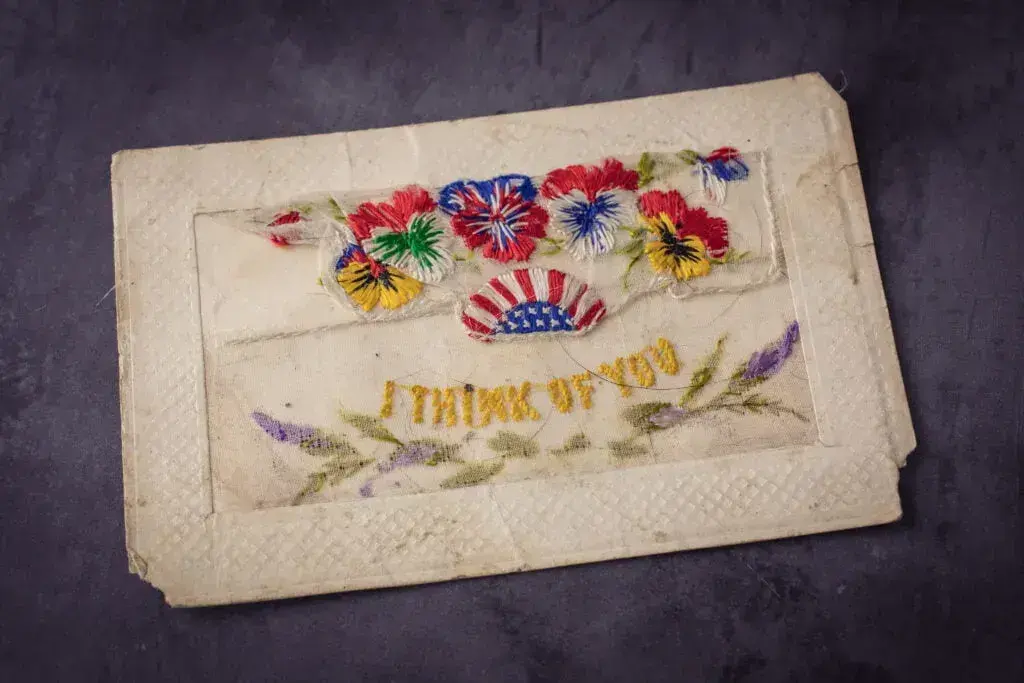
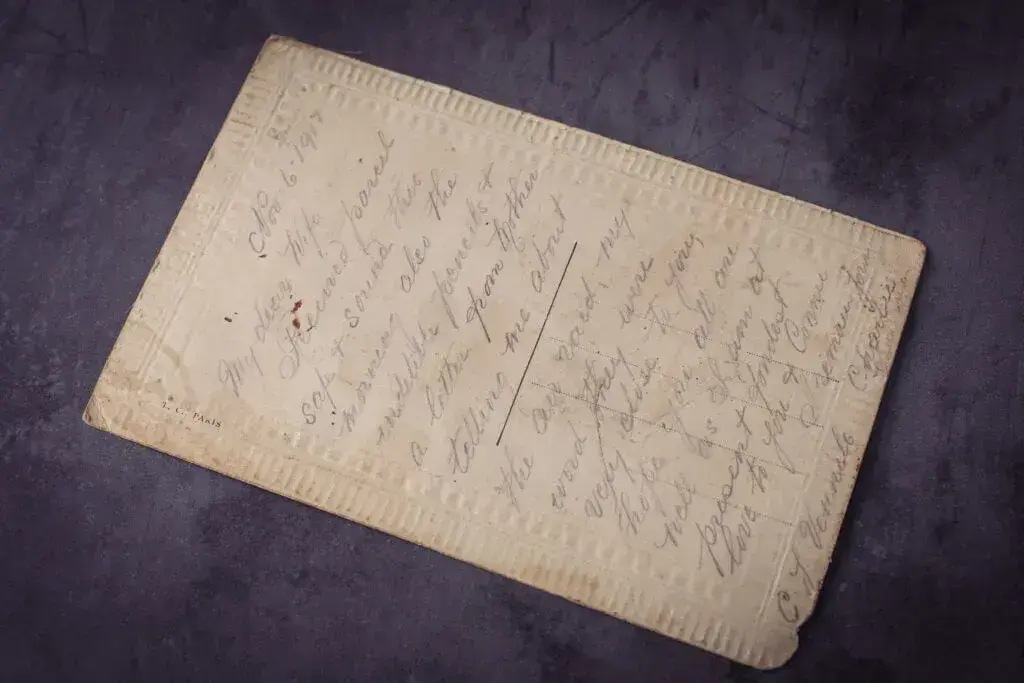
Postcard reads: Nov 16. 1917 My dear wife, Received parcel safe + sound this morning also the indelible pencils + a letter from mother telling me about the air raid, my word they were very close to you. hope you all are well as I am at present. fondest love to you + Connie. I remain yours, Charlie C. J. Vennile.
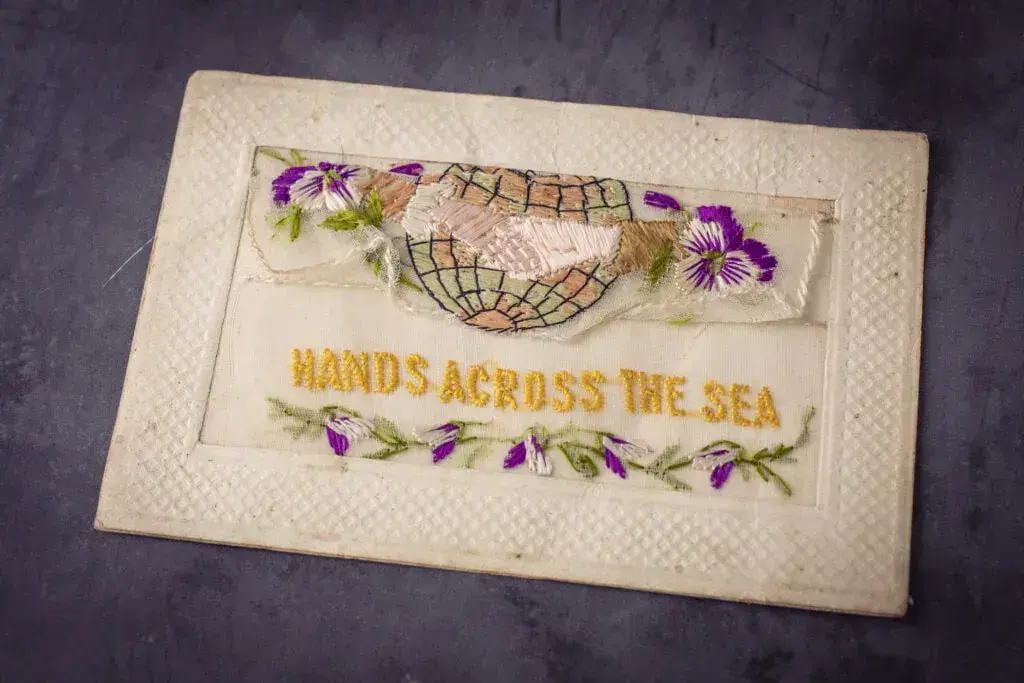

Postcard reads: 5.3.18 France Dear C, Received from Celia on 27th Sunday + the paper yesterday. glad to hear you are all well as am I at present. love to mother and Dad. Fondest love to to you + Connie [illegible] from Charles C. J. Vennile
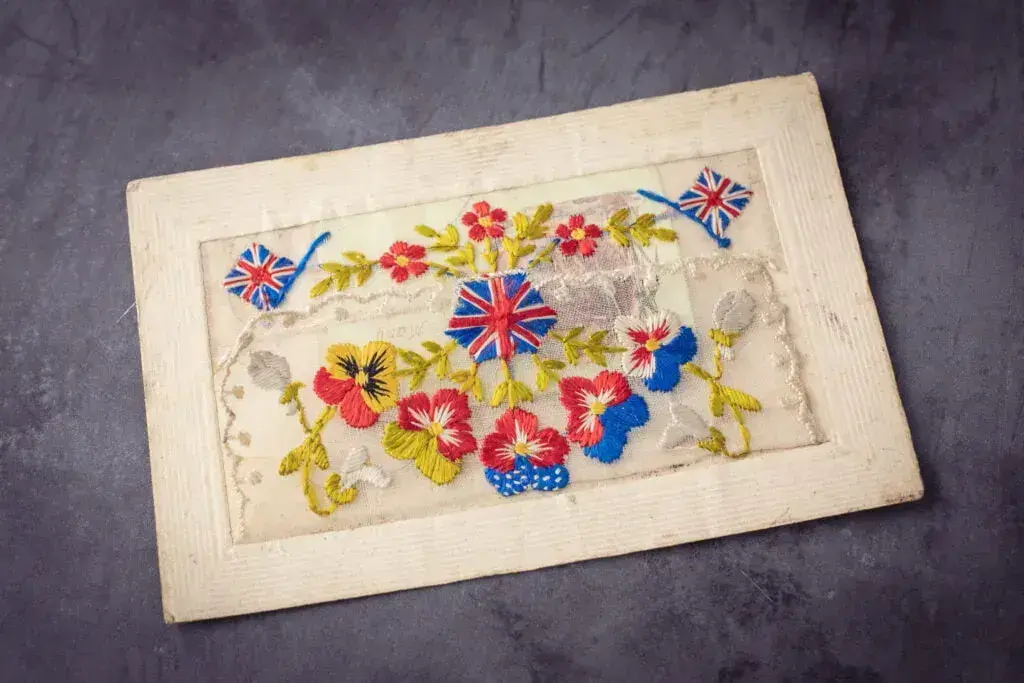

Postcard reads: FRANCE 8.9.18 My dear wife, Received your letter [illegible] very pleased to hear you are better and hope to soon get rid of the cold. I am very well myself. Love to you + C from your C
Illiteracy was commonplace during the early 20th Century, with the ability to read and write dependent on age, region and occupation. The nature of this meant that many letters contained only the briefest of messages intended to inform loved ones they were alive and sending love, like the touching note sent from a serving solder to his daughter, below.

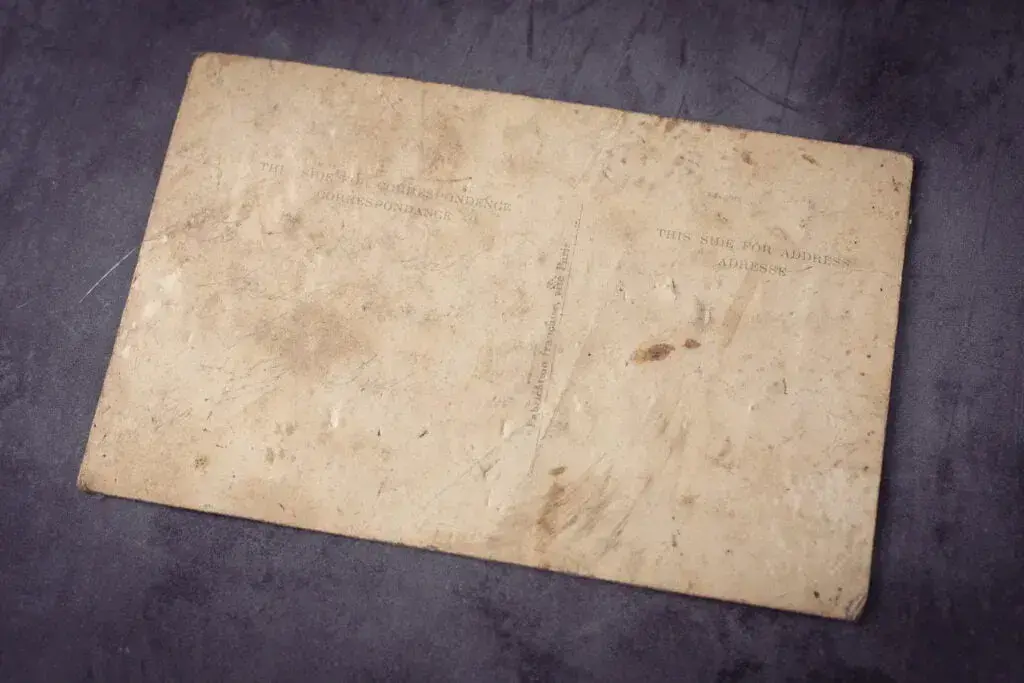
Postcard reads: To [illegible] With fondest love from Dad.
Have you got any war memorabilia in your home?
Find out more about how we can help here
